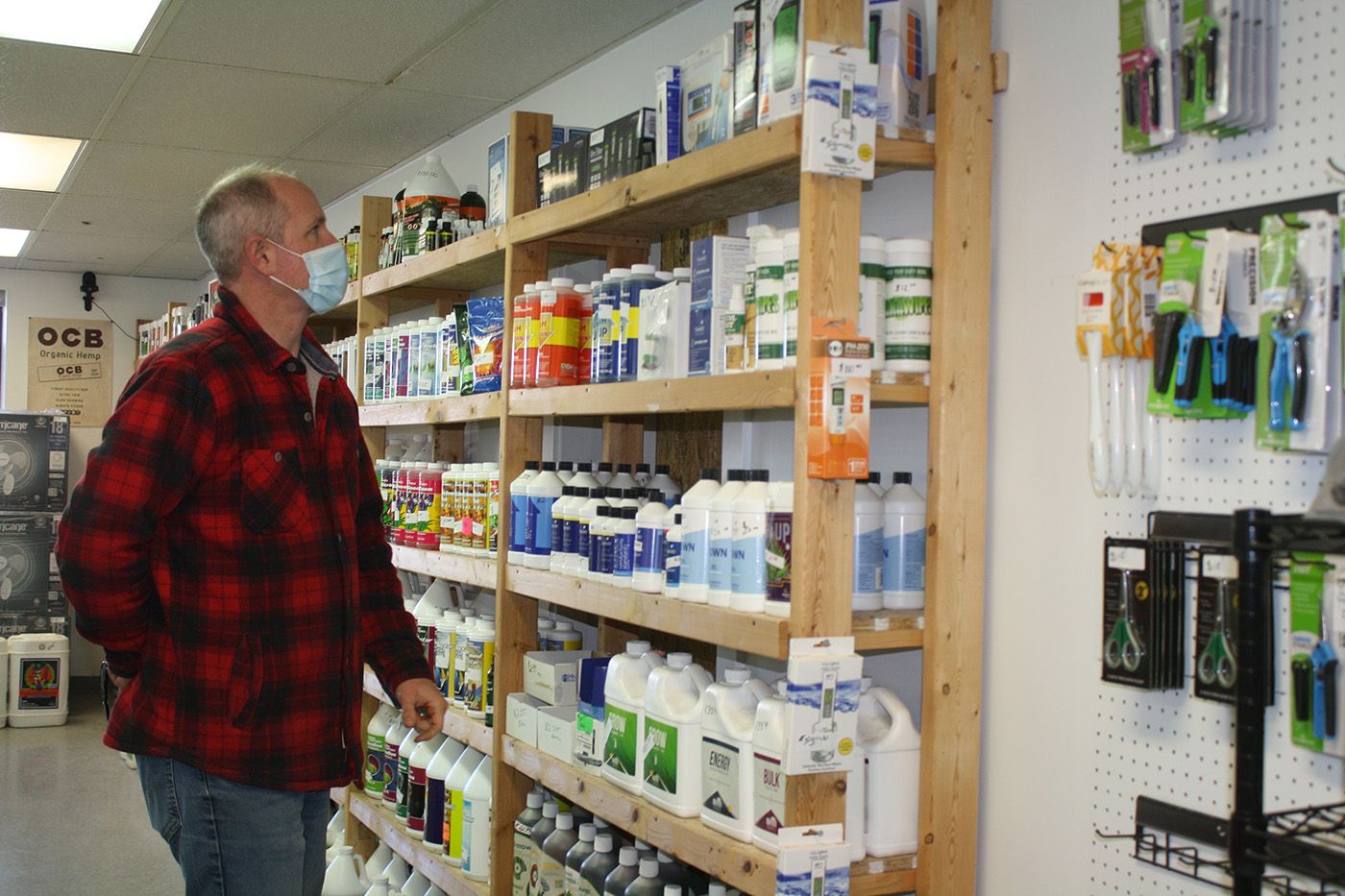
PRESQUE ISLE, Maine — When many folks talk about gardening, they think of the traditional methods that involve planting flowers and vegetables in soil and watching them grow over time. But for gardeners willing to experiment with other techniques, hydroponics might be the adventure they’re looking for.
Soil gardening is often thought of as the most “natural” type of gardening, said Chad Junkins, owner of Here We Grow in Presque Isle, due to how plants and food grow from out of the earth. By contrast, hydroponic gardening relies on mineral nutrient solutions, most often within indoor, temperature-controlled spaces.
There are nearly a dozen forms of hydroponic systems that all vary in their specific growth requirements. For instance, a method known as Deep Water Culture requires that a plant’s roots be submerged in a reservoir that contains oxygenated water. Another popular form — Nutrient Film Technique — includes a pump that continuously flows water and nutrients to the roots of all plants.
Junkins has been a hydroponic grower for the past five years and has grown vegetables such as tomatoes, lettuce, pea shoots, radish sprouts and mung beans. Foods that do not grow well under hydroponic systems, he noted, include carrots, corn, potatoes and sweet potatoes.
Unlike soil gardening, hydroponic methods allow people to grow their own foods year-round and enjoy those foods more quickly without sacrificing quality.
“If you grow tomatoes using Deep Water Culture, they’ll be in the vegetative stage for two weeks and in the flowering stage for two months,” Junkins said. “With soil, you’re looking at a month and a half in the vegetative stage and two months in the flowering stage.”
Junkins encourages anyone considering hydroponic gardening to research various methods and consider the costs of materials before committing to a project. Necessary materials for most hydroponic systems include specialty pots and nutrients, artificial lighting, a meter to measure acidity in water, fertilizers, clay pebbles for the bottom of pots and a humidifier and dehumidifier for temperature control.
Junkins recommends that interested hydroponic gardeners consult expert opinions rather than relying on internet how-to videos. They should also consider whether they are able to commit to a hydroponic garden, which requires more maintenance and mathematical calculations than soil gardening.
“If a plant in a soil pot is looking limp, you usually just need to add more water or transfer the plant to a new pot,” Junkins said. “But with hydroponics, you need to flush the whole system out and put new water every two weeks.”
Whether someone chooses hydroponic or soil gardening largely depends on what methods they believe result in the best-tasting food and if they are willing to learn the most effective methods of keeping a hydroponic system sustainable.
“You have to think of it as an investment like anything else,” Junkins said. “Think about your budget and whether you can commit time to that type of gardening every day.”







